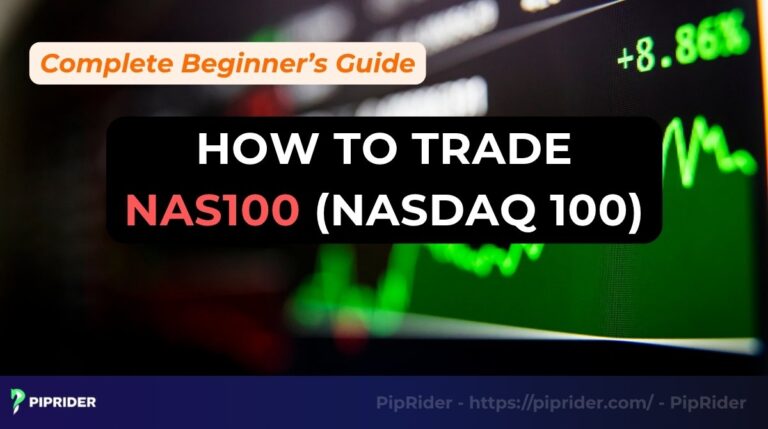Are you looking for a trading indicator that provides clear, simple, and reliable buy/sell signals without the complexity of most tools? The Half Trend indicator is a custom-built tool that has gained immense popularity among Forex traders for exactly that reason. It’s a simple, visual, and non-repainting indicator that can significantly clean up your charts and clarify your decision-making.
This document is intended to be your comprehensive manual for the Half Trend indicator. We will break down how it works, why its “non-repainting” feature is so important, and how to use it in a robust trading strategy.
Key Takeaways
- The Half Trend indicator uses a color-coded line and arrows to identify the current trend direction.
- It’s a non repainting indicator, so signals are permanent once a candle closes.
- Its levels are based on the Average True Range (ATR), allowing it to adapt to a currency pair’s fluctuation.
- The indicator provides clear entry prompts with distinct blue (buy) and red (sell) arrows.
- Like other trend indicators, the Half Trend’s best used with a trend filter to avoid false signals in sideways markets.
1. What is the half trend indicator?
The Half Trend indicator is a technical analysis tool that uses moving averages to identify market trends. Its main advantage is that it’s a non-repainting indicator, meaning a signal won’t disappear or move after a candle closes” (TradingFinder, 2025).
This makes its blue (buy) and red (sell) arrows reliable. As a trend-following tool, the indicator works best when the market is moving clearly in one direction and should be used with a trend filter to avoid false signals in sideways market conditions.
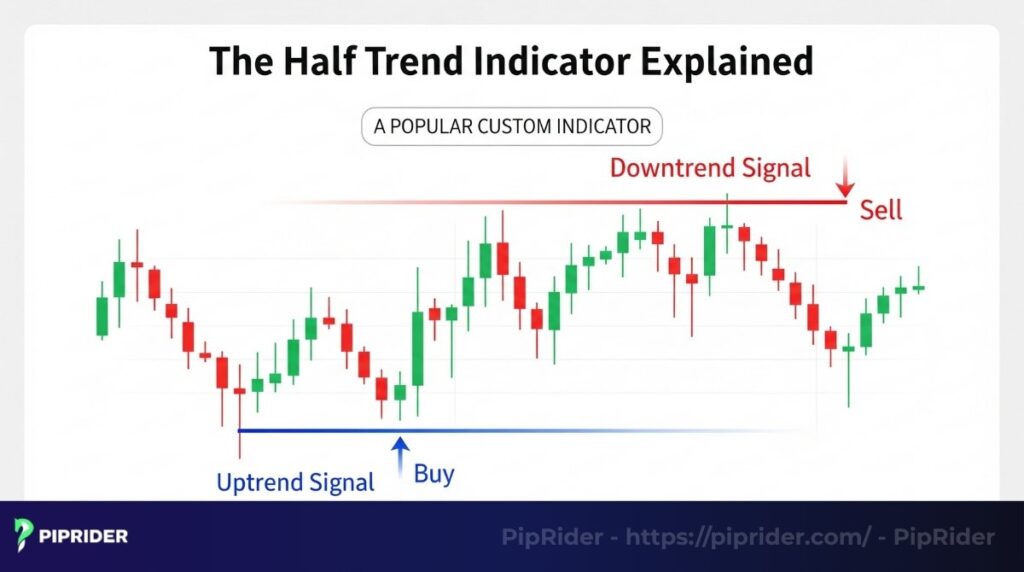
Unlike standard indicators, the Half Trend is not pre-installed on platforms like MetaTrader or TradingView. Instead, it is a community-developed tool that must be downloaded and installed separately, a testament to its grassroots popularity.
2. How does the Half Trend indicator work?
While the Half Trend may look like a simple moving average, the logic under the hood is more sophisticated. Its calculation is designed to be both responsive to the trend and adaptive to market volatility.
The indicator’s algorithm is not a simple average of closing prices. Instead, the Half Trend uses calculations based on the ATR to measure a currency pair’s recent fluctuation. It then combines this with the moving average of the highest high and lowest low over a lookback period to draw a single, smoothed trend line that acts as a dynamic support level or resistance level.
3. The components of the Half Trend indicator
When you load the Half Trend indicator onto your chart, you will see two simple, intuitive components. These visual elements are designed to give you all the information you need at a single glance, making it incredibly user-friendly.
3.1. The main trend line
This is the central feature of the indicator. The prevailing trend is conveyed by its changing color. A blue line signifies that the market is in an uptrend, serving as a dynamic area of support. A red line indicates a downtrend, acting as a dynamic resistance level.
3.2. The buy/sell arrows
These arrows provide the explicit trading signals. An upward-pointing blue line appearing below a candle represents a buy prompt. A downward-pointing red arrow appearing above a candle represents a sell prompt.
Read more:
Aroon Indicator: How to use it in Forex Trading
The Parabolic SAR Indicator: A Beginner’s Trading Guide
Supertrend Indicator: Definition, Formula, Proven Strategies
4. Why is the “non-repainting” feature so important?
This is without a doubt the most vital quality of any reliable signal-based tool. For any trader who has been misled by indicators that appear perfect in hindsight, the “non-repainting” nature of Half Trend is a game-changer.
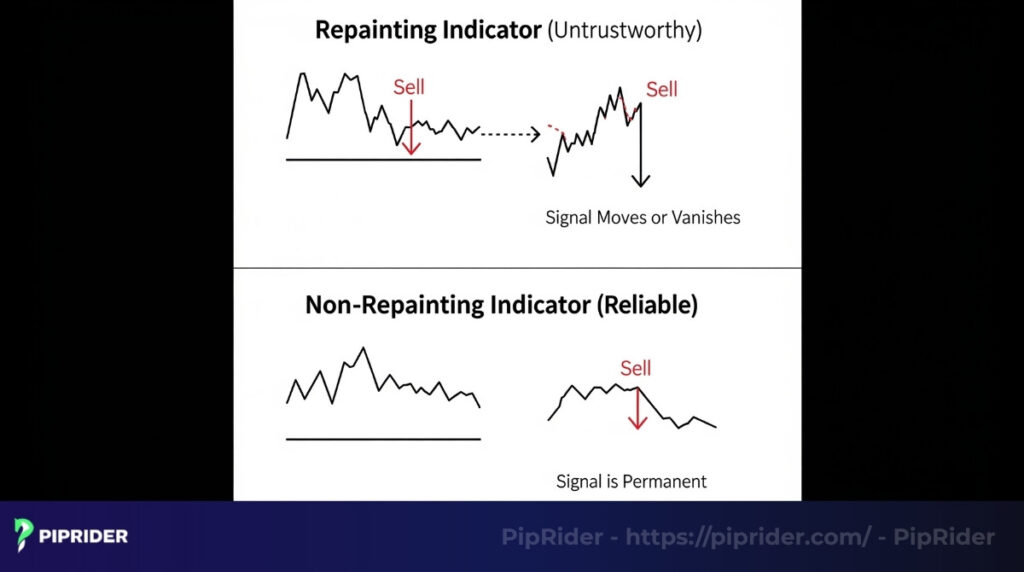
“Repainting” describes indicators whose past signals visually change or vanish after more candles have formed. This creates an illusion of flawless accuracy on historical charts but renders them completely untrustworthy for live decision-making.
The half trend is a lagging indicator, which means once a candle closes and an arrow is printed, that signal is locked in forever. This gives you absolute confidence that what you see during backtesting is what you would have seen in a live market.
5. Principles for applying the Half Trend indicator in trading
The beauty of the Half Trend lies in its dual functionality. It serves as both a high-level compass to determine your overall market bias and as a precise tool to pinpoint specific moments for action. From our experience, a professional trader learns to use both functions in harmony.
5.1. As a high-level trend filter
We consider this the most fundamental and strategic role of the Half Trend. The color of the main trend line acts as our directional guide for an entire trading session, telling us which side of the market we should be focusing on. If the line is blue, the underlying momentum is a bullish trend; if it’s red, it’s a bearish trend.
For example, if we open the H4 chart of EUR/USD and the Half Trend line is blue, our entire mindset for that session becomes “buy-only.” We will completely ignore any potential sell setups or bearish patterns that appear.
This simple discipline is one of the most effective ways to ensure you are always trading in the direction of the dominant momentum shown by the momentum indicator.
5.2. For specific entry and exit points
This is the indicator’s more active, tactical function, provided by the colored arrows. While the trend line gives us the strategic context (the “what” and “why”), the arrows provide the tactical trigger for when to consider entering or exiting a trade.
In our experience, a blue arrow isn’t just a random symbol; it’s a confirmation that, according to the indicator’s ATR-based logic, a specific point of bullish momentum has been established.
Many traders use these arrows as their primary signal to enter a trade that aligns with the main trend line’s color. They can also be very effective as an exit signal; for instance, we often exit a long position as soon as the first red arrow appears, signaling a potential shift in momentum.
5.3. Best use cases for the Half Trend indicator
The Half Trend is a versatile tool, but we’ve found it to be most effective when applied in these specific ways:

- Multi-timeframe analysis: Use the Half Trend on a higher time frame (e.g., H4 or Daily) to determine the overall trend bias, then drop down to a lower timeframe (e.g., M30 or H1) to look for an entry point (arrow) that aligns with that bias. This helps you filter out noise and trade with the “big money” flow.
- As a confirmation tool: The Half Trend should not be your only signal. We often combine it with other indicators for a stronger confirmation. For example, during a pullback in a blue trend, we’ll wait for the price to reach a key pivot point, then use a blue arrow from the Half Trend as our final signal to enter.
- As a trailing stop: Due to its sensitivity to fluctuation, the main Half Trend line itself can serve as a highly effective dynamic stop-loss or trailing stop. We often move our stop-loss order just below the Half Trend line on a long trade, allowing us to capture as much of the trend as possible while still protecting our capital.
6. A framework for trading with the half trend indicator
Now we move to a rules-based approach for executing trades. This simple framework provides clear conditions for entering a trade and a logical method for managing your initial risk management.
6.1. The sequence for a BUY trade
To generate a high-probability buy signal, we are looking for a clear shift from a bearish trend to a bullish trend momentum. This is confirmed by a sequence of three specific events on the chart.
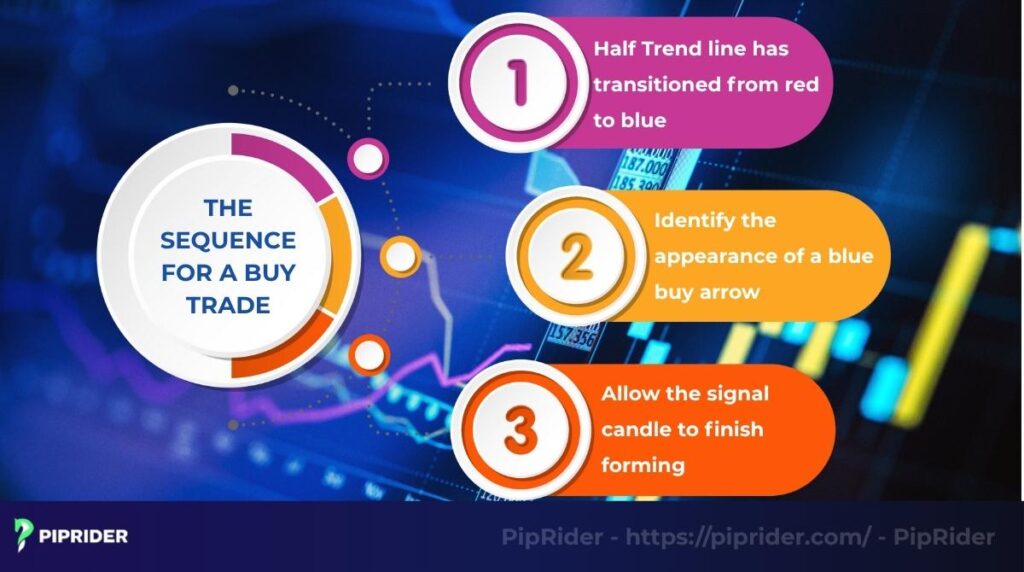
- Confirm that the main Half Trend line has transitioned from red to blue.
- Identify the appearance of a blue buy arrow below a price candle.
- Allow the signal candle (the one with the arrow) to finish forming. Once it closes, an entry point can be placed on the subsequent candle.
6.2. The sequence for a SELL trade
Similarly, a sell signal requires a clear shift from bullish to bearish trend control. We wait for the same three conditions, but in the opposite direction.
- Confirm that the main Half Trend line has transitioned from blue to red.
- Identify the appearance of a red sell arrow above a price candle.
- Allow the signal candle to close to validate the signal, then exit points can be placed on the next candle.
6.3. A method for risk management
A signal is useless without a clear plan for what to do if you are wrong. The Half Trend line itself provides a logical and dynamic level for placing your protective stop loss.
Setting your stop loss: A common approach is to use the trend line as a reference point.
- For a buy trade, you would place your stop a few pips below the blue Half Trend line.
- For a sell trade, you would place it a few pips above the red Half Trend line. This provides a dynamic stop that trails the price direction as it progresses.
7. Building a robust trading strategy with half trend
An indicator is not a strategy. To transform the Half Trend from a simple tool into a robust trading system, you must add layers of filtering and context. This section covers the essential filters for dealing with sideways markets and the unique characteristics of Forex.
7.1. Using a long-term trend filter: The 200 EMA rule
The Half Trend’s biggest weakness is that it can generate false signals in a sideways or ranging market. The professional solution to this problem is to add a long-term trend filter, like a 200-period moving average, to your chart.
7.1.1. The solution for ranging markets
The 200 EMA serves as a high-level directional guide. It divides the chart into two distinct territories: a bullish territory (when price is above the EMA) and a bearish territory (when price is below it).
7.1.2. The combination rule
To create a simple rule-based system, only take buy signals from the Half Trend when the price is trading above the 200 EMA. Conversely, consider sell signals only when price is trading below the 200 EMA. This simple filter will eliminate most of the low-probability, counter-trend signals.
7.2. Applying specific notes for the Forex market
While the Half Trend works in any market, applying it to Forex requires an awareness of the market’s unique characteristics. Here are some crucial notes for Forex traders.
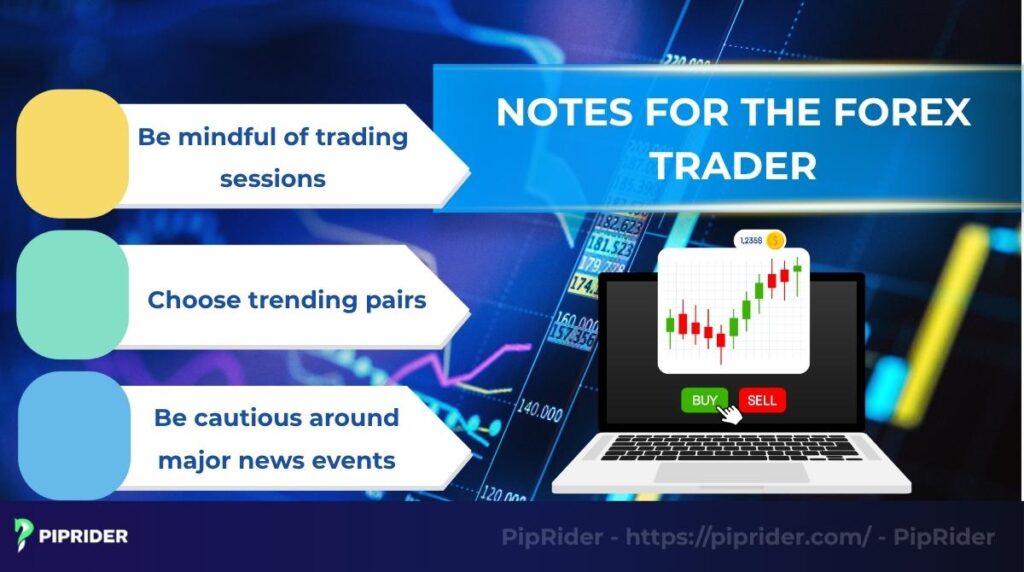
7.2.1. Be mindful of trading sessions
The Forex market’s 24-hour nature means its fluctuation changes drastically. The Asian session is often quiet and range-bound, which is a very difficult environment for trend indicators. The Half Trend will be most effective during the more volatile London and New York sessions.
7.2.2. Choose trending pairs
Not all currency pairs are created equal. Some pairs, like GBP/JPY or EUR/AUD, are known for strong trends, making them ideal for this indicator. Others, like EUR/CHF or AUD/NZD, are often range-bound and will generate more false signals. Do your homework on pair characteristics.
7.2.3. Be cautious around major news events
High-impact news (like NFP or central bank announcements) can cause extreme, unpredictable price fluctuations. This can easily lead to “whipsaws” where the Half Trend gives a sell signal right before a massive reversal. It’s often wiser to stay out of the market during these specific times.
8. The difference between half trend and supertrend indicators
Traders often compare the Half Trend to another popular trend indicator, the Supertrend. While they share some similarities in their function and appearance, there is a key difference in their design that appeals to different types of traders.
- Similarities: Both are trend-following indicators that use ATR in their calculations. Functionally, both tools draw a line on the chart that can be used as a dynamic area of support or resistance.
- Key difference: The main difference is that the supertrend is typically just a single, color-changing line. The half trend, however, introduces the additional visual element of unambiguous buy and sell arrows. These arrows make the entry and exit points much clearer and more intuitive, which is a significant advantage for traders who prefer a very clean and explicit signal.
9. What is the best setting for the half trend indicator?
This is one of the most common questions about any indicator, but the answer is always the same. A professional trader knows that there is no magic setting that works perfectly in all conditions.
9.1. There is no “best setting”
A core principle of trend analysis is that no “one-size-fits-all” setting exists. The ideal configuration for the Half Trend is entirely dependent on your personal trading plan, the specific currency pair, and your chosen timeframe. A setting that works well for a EUR/USD swing trader on the H4 chart will likely be terrible for a GBP/JPY scalper on the M5 chart.
9.2. Advice from experience
Our advice is to start with the default setting (usually an Amplitude of 2) and treat it as your baseline. Then, through careful backtesting on your chosen market and timeframe, you can experiment with slightly higher or lower values to see what gives you the most reliable results for your specific system.
Be very careful to avoid “over-optimization,” which is the mistake of finding a setting that only works on past data.
10. How to set up half trend on MT4 and TradingView
Since Half Trend is a custom indicator, the installation process is slightly different from default tools. Here is a general guide for the two most popular platforms.
On TradingView:
- Begin by selecting the “Indicators” option on your chart’s top toolbar.
- Go to the “Community Scripts” section.
- In the search bar, type “Half Trend”. Many versions will appear; a popular one is often by the user “everget”.
- Select it from the list to add it to your chart.
On MetaTrader 4 (MT4):
- Download the Half Trend indicator file (it will have an .ex4 or .mq4 extension).
- Within the MT4 platform, navigate to File > Open Data Folder.
- Navigate to the MQL4 > Indicators folder.
- Copy and paste your downloaded indicator file into this folder.
- Restart MT4. The Half Trend indicator will now be available in your “Custom” indicators list in the Navigator window.
11. FAQs
12. Conclusion
The half trend indicator is an excellent, straightforward, and reliable trend-following tool, particularly well-suited for traders who value clarity and simplicity. Its non-repainting nature gives it a level of trustworthiness that many other custom indicators lack, and its visual signals are incredibly easy to interpret.
However, it is not a holy grail. Its true power is unlocked when you respect its main weakness, ranging markets, and combine it with a simple long-term trend filter like the 200 moving average. The half trend can also be a powerful tool for anticipating market reversals. The half trend may not be complex, but it is a powerful and robust support tool. We encourage you to test it on a demo account to feel its effectiveness for yourself. Another effective approach is to use the arrows to determine take-profit orders or profit targets.
For a more comprehensive overview of the best technical indicators, read more of Piprider‘s articles. Don’t forget to leave your comment if you have any questions in the chat box below!








